Dominique Luchart's Blog, page 572
July 9, 2021
Biden’s executive order puts net neutrality back in the spotlight, Richard Lawler
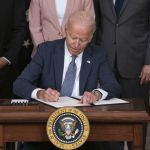
Earlier today President Biden signed the Executive Order on Promoting Competition in the American Economy, and in it there were several provisions relating to net neutrality. The prior administration’s FCC and FTC rolled back Obama-era rules in those areas, and now there is a clear agenda to restore them.
Directives for the FCC from the order:
(i) adopting through appropriate rulemaking “Net Neutrality” rules similar to those previously adopted under title II of the Communications Act of 1934 (Public Law 73-416, 48 Stat. 1064, 47 U.S.C. 151 et seq.), as amended by the Telecommunications Act of 1996, in “Protecting and Promoting the Open Internet,” 80 Fed. Reg. 19738 (Apr. 13, 2015);
(iv) prohibiting unjust or unreasonable early termination fees for end-user communications contracts, enabling consumers to more easily switch providers;
(v) initiating a rulemaking that requires broadband service providers to display a broadband consumer label, such as that as described in the Public Notice of the Commission issued on April 4, 2016 (DA 16-357), so as to give consumers clear, concise, and accurate information regarding provider prices and fees, performance, and network practices;
(vi) initiating a rulemaking to require broadband service providers to regularly report broadband price and subscription rates to the Federal Communications Commission for the purpose of disseminating that information to the public in a useful manner, to improve price transparency and market functioning; and
(vii) initiating a rulemaking to prevent landlords and cable and Internet service providers from inhibiting tenants’ choices among providers.
The FCC is now tasked with reviving the “Broadband Nutrition Label” that was in development in 2016. The label would provide a standardized format for providers to display their price, data allowances and details on performance, similar to the labels you currently see on food at the grocery store.
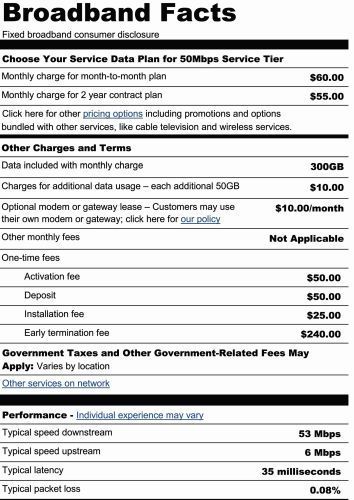 Sample “Broadband Nutrition Label”FCC
Sample “Broadband Nutrition Label”FCCThe FCC issue also asked to start the process of requiring ISPs to regularly report their prices to the FCC, to help “improve price transparency and market functioning.” As Multichannel News points out, implementing these changes will require adding a third commissioner to the FCC who will vote in favor of these measures, breaking the current 2-2 tie. Current acting FCC chair Jessica Rosenworcel said in a statement that “I welcome this effort by the President to enhance competition in the American economy and in the nation’s communications sector.”
Republican FCC commissioner Brendan Carr would be expected to have a no vote on many of these policies, and says that this order “seems to double down on price controls, government-run networks, and monopoly-style regulations–actions that would only make it harder for smaller providers and new entrants to compete.”
While ISPs like Comcast and Verizon have not yet responded to requests for comment from The Verge, cable industry lobbying groups quickly put out their own information.
Speaking for a group that represents “small and medium-sized cable operators,” American Communications Association president Matthew Polka chose to largely ignore everything in the order. Instead his statement takes aim at what he sees as a lack of competitive market for another target, studios and broadcast stations, in a statement that says “Every day our members are unfairly leveraged by large video programmers and broadcast station groups, causing our customers’ video rates to soar…members fear that dominant Internet platforms and powerful streaming services may choose not to make their services available to the subscribers of some smaller ISPs.”
The NCTA counts Comcast, WarnerMedia, Disney, Charter and Cox among its members and is ostensibly in favor of an “open internet,” as long as no one tries to classify broadband as a utility or passes any rules that would make sure it stays that way. The cable industry group issued a statement (with on name attached) that says “We are disappointed that the Executive Order rehashes misleading claims about the broadband marketplace, including the tired and disproven assertion that ISPs would block or throttle consumers from accessing the internet content of their choice.”
Similarly, the CTIA represents the interests of its member wireless carriers and is coming out against the order. In its own statement the association is claiming “The highly regulatory approach outlined in today’s order unfortunately risks harming consumers by distracting from bipartisan efforts to close the digital divide, inhibiting new competitive choices and innovation, jeopardizing new job creation, and needlessly risking our nation’s future technological leadership.”
On the other side, Free Press VP of policy and general counsel Matt Wood says “The FCC needs to reverse the damage done by the Trump administration, which presided over rising prices and declining investment in broadband while pretending that a do-nothing deregulatory approach would solve these problems…When the Trump FCC abandoned the proper legal framework and policies in 2017, people of every political stripe overwhelmingly opposed that repeal. When we finally have a full and functioning FCC dedicated to promoting the public interest again, the agency can get the job done — taking the kinds of steps outlined in today’s executive order and more.”
The post Biden’s executive order puts net neutrality back in the spotlight, Richard Lawler appeared first on NEWDAWN Blog.
President Joe Biden’s latest executive order is a huge win for right to repair, Catie Keck

A sweeping executive order aimed at promoting economic competition and signed Friday by President Joe Biden called on the Federal Trade Commission to institute rules to curb anticompetitive restrictions that limit consumers’ ability to repair gadgets on their own terms.
Tucked into the executive order that covered 72 initiatives to promote competition in the US economy, Biden specifically asked the FTC to crack down on “unfair anticompetitive restrictions on third-party repair or self-repair of items, such as the restrictions imposed by powerful manufacturers that prevent farmers from repairing their own equipment.”
The order is a significant win for the right to repair advocates who have long championed a consumer’s choice to have their technology fixed either by third parties or on their own, rather than solely by the manufacturer. Right to repair argues that anyone should have access to the OEM parts, manuals, and software needed to perform those repairs. Major gadget makers have lobbied to prevent this kind of repair accessibility, but the right to repair movement has been picking up momentum in recent years.
Specifically, Biden took aim at cell phone makers and other tech companies, including tractor manufacturers, that “impose restrictions on self and third-party repairs, making repairs more costly and time-consuming, such as by restricting the distribution of parts, diagnostics, and repair tools.”
In a statement, US PIRG’s senior right to repair campaign director Nathan Proctor said it was “a big day for the right to fix our stuff.”
“More repair choices will protect the environment by cutting down on the amount of new electronics we make and old stuff we toss,” Proctor said. “More choices help save money and cut down-time waiting for the manufacturer’s technician, which is especially important for farmers on tight planting or harvesting schedules. This is a win.”
The post President Joe Biden’s latest executive order is a huge win for right to repair, Catie Keck appeared first on NEWDAWN Blog.
The FTC has reportedly opened an investigation into Amazon’s MGM acquisition, Jay Peters
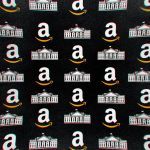
The Federal Trade Commission has opened an investigation into Amazon’s acquisition of MGM, The Information reported Friday. The Information describes the probe as an “in-depth investigation into the deal,” which could signal that it will stretch on for many months. The investigation also means the deal will be scrutinized by an FTC newly headed up by Lina Khan, an antitrust advocate and an Amazon critic.
The FTC is focused on “the larger implications of the deal for Amazon’s market power,” The Information reported based on information from two people who knew of the probe, and that “the FTC is wary of whether the deal will illegally boost Amazon’s ability to offer a wide array of goods and services, and is not just limited to content production and distribution.”
Amazon announced that it had reached a deal to acquire MGM, the studio behind the James Bond franchise, for $8.45 billion on May 26th, but it was widely expected that the merger would receive extra scrutiny from the government. On June 22nd, The Wall Street Journal had reported that the investigation was in the works, and Senator Elizabeth Warren called on the agency to give the deal a “meticulous” review in a letter addressed to Khan and shared exclusively with The Verge on June 29th.
The FTC declined to comment, and Amazon has not replied to a request for comment.
The probe is the latest signal of increased antitrust scrutiny from the Biden administration. And Khan has scrutinized Amazon for years, publishing an article titled “Amazon’s Antitrust Paradox” for the Yale Law Journal in 2017 that was popular in progressive economic policy circles. (Amazon is, unsurprisingly, not a fan of Khan, and has filed a recusal motion calling for her to restrict herself from proceedings involving Amazon.)
Earlier Friday, Biden signed an executive order meant to promote competition that targets right to repair rules, net neutrality, and more.
The post The FTC has reportedly opened an investigation into Amazon’s MGM acquisition, Jay Peters appeared first on NEWDAWN Blog.
Space tourism rivalry gets extremely petty ahead of Branson’s spaceflight, Joey Roulette
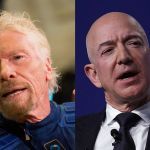
A PR war between two billionaire-owned space companies, Jeff Bezos’ Blue Origin and Richard Branson’s Virgin Galactic, is starting to get spicy.
Ever since Virgin announced it’d try to fly its founder Branson to space nine days before Bezos flies on his own rocket, Blue Origin has been on a warpath to discredit Virgin’s suborbital spaceplane, publicly attacking everything from the vehicle’s peak altitude to the size of its windows. Blue Origin’s CEO Bob Smith wished Branson well after Virgin’s announcement, but alleged he’s not really going to space — “they’re not flying above the Karman line and it’s a very different experience.”
The Karman line, 62 miles above ground, is the boundary of space recognized by the Federation Aeronautique Internationale (FAI), a Swiss organization that sets global rules for air sports. Blue Origin’s New Shepard rocket launches its crew capsule just beyond the Karman line for a few minutes of weightlessness, while Virgin Galactic’s SpaceShipTwo spaceplane flies 55 miles high — just over the boundary of space defined by the US government. So, both companies say they fly to space, just by different standards.
From the beginning, New Shepard was designed to fly above the Karman line so none of our astronauts have an asterisk next to their name. For 96% of the world’s population, space begins 100 km up at the internationally recognized Karman line. pic.twitter.com/QRoufBIrUJ
— Blue Origin (@blueorigin)
Blue Origin tweeted a colorful chart on Friday, two days before Branson’s flight, comparing Virgin Galactic’s spaceplane to Blue Origin’s New Shepard on window size, vehicle type, escape system, and other factors. “From the beginning, New Shepard was designed to fly above the Karman line so none of our astronauts have an asterisk next to their name,” the company said in its tweet, implying Virgin Galactic’s SpaceShipTwo passengers can’t call themselves astronauts. The company continued, suggesting the Karman line is a legally binding international standard: “For 96% of the world’s population, space begins 100 km up at the internationally recognized Karman line.”
Asked where it pulled the 96 percent figure from, a Blue Origin spokesperson clarified in an email to The Verge that they subtracted the US population from the world’s population, because the US follows a different standard than the FAI, the Switzerland-based organization. “The US Air Force is the only government agency that has consistently recognized a lower altitude as the boundary of space (80 km / 50 miles),” the spokesperson added. In reality, both NASA and the FAA, a US government agency that licenses Blue Origin launches, also use the same 50-mile standard for recognizing the boundary of space. It’s worth noting that Blue Origin is based in the US and is generally required to follow US spaceflight standards.
Virgin Galactic didn’t immediately respond to a request for comment on Blue Origin’s tweet. But Nicola Pecile, a Virgin Galactic test pilot, hit back, saying in a now-deleted tweet, “this pissing contest about the Karman line is so childish that is getting really embarrassing to watch. Flying above 100K ft is already so complicated that anyone doing so should deserve a special recognition.” In another tweet, he cited Virgin Galactic’s first spaceflight with humans in 2018 and added that Blue Origin “has flown only mannequins so far.”

The “pissing contest” on Twitter was only the latest fight in a month full of snark and sass between the two billionaire-funded space tourism companies as each gears up to fly their respective billionaire founders to space. Virgin Galactic’s decision to fly Branson on July 11th was widely seen as a PR move to beat Bezos’ launch to space on July 20th. Branson was originally poised to fly on a later flight, likely a few months from now. When Branson was asked on CNBC last week whether he’s trying to beat Bezos to space, he replied: “Jeff who?” (It was the same initial response SpaceX CEO Elon Musk gave when asked a similar question in a 2016 BBC interview.)
Blue Origin’s tweet on Friday reignited online discussion about where the boundary of space should be set. Interpretations vary greatly between fields of study — a meteorologist may argue space begins much lower than where a planetary scientist would set the bar. But for human spaceflight, the US has long maintained that 50 miles is the appropriate altitude for space to begin, and the point where a person can earn their “astronaut wings.”
Jonathan McDowell, a Harvard astronomer and expert tracker of space objects, argues in a 2018 academic paper that space begins at 50 miles above ground, based on physics and roughly the minimum altitude for orbital objects. In a phone call with The Verge, McDowell pushed back on Blue Origin’s claim that a vast majority of the world’s population believes space begins at the FAI’s 62-mile marker and that it’s an “internationally recognized” standard. While most space-faring nations might agree with the FAI’s standard, it doesn’t represent a large chunk of the world’s population, he says.
“A lot of countries don’t have an opinion, a lot of countries have not chosen to rule on it. And international legal bodies, which the FAI is not, have not ruled on it. So to say that it’s internationally agreed is a bit of a stretch.”
The post Space tourism rivalry gets extremely petty ahead of Branson’s spaceflight, Joey Roulette appeared first on NEWDAWN Blog.
As space billionaires take flight, ‘the right stuff’ for space travel enters a new era, ,
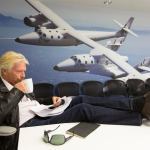
For perhaps the first time, the humans inside a spacecraft will — in a strict financial sense — be worth more than the vehicle itself, as billionaires take to the skies this month in a pair of historic suborbital spaceflights that mark a dramatic change in what it takes to become an astronaut.
On July 11, British business magnate Richard Branson will strap himself into the cabin of the spaceplane VSS Unity, along with three employees of his space tourism company Virgin Galactic. Just over a week later, on July 20, in a move timed to coincide with the 52nd anniversary of Americans first landing on the moon, Amazon founder Jeff Bezos will climb into a New Shepard capsule as a passenger on the first crewed flight conducted by his company, Blue Origin.
Neither flight will last long — each billionaire will slip out of gravity’s clutches for a scant handful of minutes. But taken together, the two jaunts into suborbital space may usher in a new era of spaceflight and spaceflyers alike.
“I think the definition of ‘astronaut’ is up for grabs again right now,” Jordan Bimm, a space historian at the University of Chicago and the Smithsonian Institution’s National Air and Space Museum., told Space.com. “What isn’t changing is that space remains an incredibly elite space. It’s just a different pathway there.”
And however the idea of an astronaut changes moving forward, the role will retain flavors of the astronauts who have flown to date, affected by both the military aura of the Cold War astronaut and the scientific agenda of the space station researcher, he said. “It’s not like it sheds those identities each time,” Bimm said. “It builds on them, like an extra coat of paint on an old wall.”
Photos: The first space tourists
A slow trip to spaceFor both billionaires, the path to space began more than a decade ago, when each already-established entrepreneur founded a company aimed at spaceflight.
Branson founded Virgin Galactic in 2004, and the company has always focused on suborbital passenger flights of a piloted space plane launched from a larger carrier plane. The first commercial flight was originally targeted to occur as early as 2008, but the company faced a host of delays, including a fatal accident in 2014.
Virgin Galactic only flew its first passenger, the company’s chief astronaut instructor Beth Moses, in 2019. Since then, the company’s plans for launching a full cabin of passengers have again faced delays. But Branson has made no bones about planning to be on Virgin Galactic’s first operational trip, saying as early as 2013 that he intended to be on the flight.
[image error]
Jeff Bezos and Blue Origin staff celebrate the successful landing of a New Shepard rocket. (Image credit: Blue Origin)Bezos kept his flight intentions quieter, although he’s long spoken publicly about watching the Apollo moon landing in 1969 and wanting to visit space himself. He founded Blue Origin in 2000, and the company’s vision began with vertical launches on a reusable rocket to suborbital space. (The company has since announced a planned orbital system as well.)
Blue Origin had dreams of launching commercial suborbital flights perhaps as early as 2010, but has so far stuck to 15 uncrewed launches, including one during which company employees rehearsed entering and exiting the capsule but were not on board during the flight.
Although Branson and Bezos will be the first to have funded the vehicle they will fly on, they won’t be the first to buy their way into space. Seven passengers hitched rides to the International Space Station aboard Russian Soyuz capsules in the 2000s on flights booked through Space Adventures, a Virginia-based space tourism company. The trips, which cost tens of millions of dollars, included a weeklong stay on the orbiting laboratory and meant facing the indignities of trying to sleep and use the toilet without the help of gravity.
Branson’s and Bezos’ brief suborbital jaunts will be very different, but they’ll need to contend with some of the same hubbub that surrounded those tourism flights about who gets to be an astronaut and what makes an astronaut.
Who has ‘the right stuff’?Americans have loved astronauts for almost as long as there have been American astronauts, and our idea of an astronaut begins with human spaceflight itself, in the era of the American-Soviet race to space in the late 1950s.
As the United States began its astronaut program, leaders considered a few different models of astronaut. When the Air Force was briefly in charge, it considered sending desk jockeys into orbit, Bimm said, and even NASA briefly opened astronaut applications to everyone, according to Matthew Hersch, a space historian at Harvard University, before limiting the role to military aviators.
And in that first group of astronaut selections, NASA had to face the reality that it didn’t know what characteristics would make a successful astronaut.
[image error]
NASA’s Mercury astronauts at the 1959 press conference announcing their selection to the world. (Image credit: NASA)“One of the dirty little secrets of the Project Mercury selection is that the examinations that were undertaken of prospective astronauts were invented just for that selection,” Hersch said. “Mostly, the purpose that they served was to test people’s willingness to put up with a lot of nonsense in order to be an astronaut.”
Once selected, that first corps of test-pilots-turned-astronauts found themselves, with NASA’s help, with the power to shape American perception of spaceflight. And they used that power to cling to the position, Hersch said, “recognizing that if anyone can be an astronaut, being an astronaut doesn’t really mean anything anymore,” and fearing that the public would realize the astronauts “had been lucky enough to be selected, but they weren’t particularly special.”
As part of the effort to retain their position, the early astronauts fought for NASA to give pilots more control of the spacecraft, rather than taking advantage of opportunities offered by automation. “Having average people flying into space was completely unthinkable, and astronauts were horrified by the thought that the future iterations of human space vehicles in the United States might be so completely automated that the pilot wouldn’t really have anything to do at all,” Hersch said.
Meanwhile, NASA and the rest of the government was also doing image work for the astronauts within the Cold War context of the space race, identifying them with “a particular kind of American masculinity that was to do with families, it was to do with patriotism, to do with belief in God,” Dario Llinares, a cultural theorist at the University of Brighton in the U.K. who has analyzed the portrayal of early astronauts, told Space.com.
The stars-and-stripes, all-American vision was key, he added. “The kind of narrative that you see in the Western media is this antagonism between the way of life of Soviet communism and how that was portrayed negatively even in terms of being evil in comparison to Western freedom, and all of that kind of thing.”
Related: From Yuri Gagarin’s launch to today, human spaceflight has always been political
[image error]
NASA carefully controlled the public image of the Mercury astronauts. (Image credit: NASA)Take their military backgrounds, add the active spaceflight role they insisted upon, then consider NASA’s careful media management strategy, and you get the astronaut recipe referred to as “the right stuff”: a vision of a down-to-Earth yet swashbuckling, mythologized, middle-class American man triumphant in the face of possible death.
It’s perhaps not a coincidence that the Cold War space race fostered such a powerful vision of the astronaut, since the entire endeavor was about perception, according to Teasel Muir-Harmony, a space historian and curator at the Smithsonian Institution’s National Air and Space Museum.
“One of the very essential parts of the early space race was this idea that sending humans to the moon or setting that type of goal would win the hearts and minds of the world, and that this was essential for geopolitical power,” she said. “The audience was such an essential piece of that puzzle.”
New types of astronauts take offBut spaceflight today isn’t quite trapped in the 1960s. By the end of the Apollo moon missions in 1972, the astronaut program was beginning to shift its focus to science, and NASA sent a geologist to the moon on the final flight.
As the agency prioritized long-duration spaceflight in low Earth orbit over exploration, NASA continued to broaden the role of an astronaut, recruiting a range of scientists to join the aviators. The space shuttle program that flew from 1981 to 2011 in particular allowed those with minimal flight training — even a precious few non-agency personnel, such as Sen. Bill Nelson (D-Fla.), who is now NASA administrator — to fly and widened the perception of who could reach space, even as astronauts remained an elite corps.
“One thing that sustained the space shuttle program was, because it was a U.S. government-run space vehicle, it was plausible for people to believe that no matter who they are and how much money they had, they might themselves have an opportunity to fly in space in some kind of context,” Hersch said.
It’s into that landscape that business models of private spaceflight and the figure of the space tourist launched in the early 2000s. When those seven wealthy individuals made their way to the space station, their flights spurred additional controversy about what it meant to be an astronaut.
[image error]
Space tourist Charles Simonyi, who led the development of Microsoft’s Office software, flew to the International Space Station twice, in 2007 and 2009. (Image credit: NASA)“There was a lot of debate about whether they should be called astronauts or space tourists and as a group, they all really rejected the term space tourist,” Erika Nesvold, an astrophysicist and co-founder of the advocacy group the JustSpace Alliance, told Space.com.
“I think that’s because the term astronaut has such an elite position, but in a really beloved sort of way, which is kind of unique in our society,” she said. “There’s a certain amount of anti-elitism such that people don’t all uniformly love celebrities, or athletes, or whatnot, or politicians certainly — but a lot of people just love astronauts.”
The terminology of astronaut is still contentious, as is the difference that private companies will truly make when it comes to access to space. Tickets for Virgin Galactic flights have sold most recently for $250,000; Blue Origin has yet to announce a list price, but the one seat on the July 20 flight it sold went for $28 million at auction.
“While space billionaires often try to sell their efforts as ‘making space more accessible’ to people, they aren’t really changing anything about accessibility,” Lucianne Walkowicz, an astrophysicist at the Adler Planetarium in Chicago and co-founder of the JustSpace Alliance, told Space.com in an email.
“For middle-to-upper-class white men, space has always been relatively accessible (after all, that’s who the original astronaut selections were meant to target, to the exclusion of everyone else),” they wrote. “Wealthy people paying their way into exclusive, difficult-to-access spaces is as old as time. Tying spaceflight to wealth further emphasizes that space is yet another playground of the rich.”
And while Bezos perhaps set out to right an old wrong by offering a seat to aviator Wally Funk, one of the so-called “Mercury 13” women who passed the same qualifying exams as the first American astronauts but were excluded from the corps, the JustSpace co-founders say gestures like this don’t address the core issue.
“That just puts us in a world where we poor people, we non-billionaires, only get to go to space at the pleasure of the rich,” Nesvold said. “That’s not a solution, either.”
The shine of spaceflightJust as the perception of who can become an astronaut is perhaps expanding faster than spaceflight opportunities, grazing space will perhaps do more to society’s view of Branson and Bezos than the flights will do to increase access to space.
“Space became a place where the astronauts were able to craft and hone their public image, and their celebrity was a chance to create a persona,” Bimm said of the Mercury astronauts, and he suspects the same will be true for the space barons.
“I believe they are going to kind of bask in a bit of that aura that isn’t really applicable to them,” he said. “It’s going to be a bit of a crucible moment where they can kind of burn away some stuff they don’t want and sort of reinvent themselves. Will the Jeff Bezos that comes back from his six minutes in space be the same Jeff Bezos that went up? Of course, but he might be telling a different story, or he might be focusing on new things and claiming a transformation.”
[image error]
Jeff Bezos at the Blue Origin launch pad with a New Shepard rocket in the background. (Image credit: Blue Origin)That said, the Mercury astronauts earned their celebrity through their spaceflight, whereas for Branson and Bezos one brief spaceflight can only go so far to change existing public images, Llinares said. “They already have a narrative that is non-astronaut-based; how we conceive of Branson and Bezos and [SpaceX founder Elon] Musk has to be seen through that first.”
Bezos’ announcement that he would fly was, notably, met with a host of quips about how perhaps he could simply stay in space if he wanted to go there so badly. Branson, meanwhile, has a long history of taking on adventurous attempts at firsts and records in his own activities, even as he has overseen the Virgin business empire.
And it’s difficult to imagine seeing either man after spaceflight without considering how they built the commercial empires that have funded their paths to launch. Of course, that too has deep roots in the space race, itself a would-be allegory for political and economic systems.
“The space feats were supposed to symbolize not only the strength of a democratic society, but also the robustness of the American capitalist system in opposition to the Soviet communist system,” Muir-Harmony said. “I think that today it’s part of what these flights symbolize as well, and perhaps in a less shiny way.”
And even as Branson and Bezos race each other to the edge of space, it’s worth noting that neither man’s company is quite doing something unprecedented, historians said. “Sixty years ago, without the benefit of tech entrepreneurs and without the benefit of computers, Americans organized to accomplish this feat and did so marvelously,” Hersch said, referencing Alan Shepard‘s own suborbital flight in 1961, which occurred just weeks after the Soviet Union’s Yuri Gagarin made the first-ever spaceflight and which is, of course, the namesake of the Blue Origin suborbital program.
“The United States has a tremendous tradition of people taking their money and doing really inventive, interesting things with it, and I really support that,” Hersch said. “But as a historian, I always try to put these sorts of things into perspective, and I think, well, it’s great that people are spending a ton of money to do something that NASA did in 1961.”
Email Meghan Bartels at mbartels@space.com or follow her on Twitter @meghanbartels. Follow us on Twitter @Spacedotcom and on Facebook.
The post As space billionaires take flight, ‘the right stuff’ for space travel enters a new era, , appeared first on NEWDAWN Blog.
Former NASA astronaut’s return to space on private Axiom flight will be ‘a dream come true’ (exclusive), ,
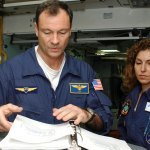
Almost a decade after retiring from NASA, Michael Lopez-Alegria is once again strapping in to launch to the final frontier.
Lopez-Alegria, who was born in Spain and grew up in California , was a U.S. Navy engineer, then a pilot and then a NASA astronaut, racking up three space shuttle missions, one long-term stint on board the International Space Station and a total of 10 spacewalks to-date. After retiring from NASA in 2012, he went on to explore the commercial spaceflight sector, more recently becoming the vice president of business development for the Houston-based spaceflight company Axiom Space.
Now, the 62-year-old Lopez-Alegria is taking his passion for commercial spaceflight to the next level by returning to space aboard Axiom’s Ax-1 mission, an entirely-private orbital space mission set to launch from NASA’s Kennedy Space Center in Florida as soon as January 2022.
“It’s a dream come true,” Lopez-Alegria told Space.com in an exclusive interview.
Related: NASA and Axiom ink deal for 1st private astronaut mission to space station
[image error]
On his fourth and last mission as a NASA astronaut, Michael Lopez-Alegria trained and flew with privately-funded spaceflight participant Anousheh Ansari (at right), who changed Lopez-Alegria’s viewpoint on commercial spaceflight activities. (Image credit: NASA)“My decision to return [to space] was not hard at all,” Lopez-Alegria said. “They asked a question and I answered promptly with, ‘Hell yes.’ So it was an easy decision. It was very easy.”
When Lopez-Alegria first started working with Axiom a few years ago, “this flying part was never part of that conversation,” he said. “To be honest, I wasn’t expecting anything like this. When I left NASA, I was pretty content with my career and ready to do something different.”
After leaving NASA, in addition to his work with Axiom, Lopez-Alegria also served as the president of the Commercial Spaceflight Federation (CSF), a private spaceflight industry group that works to promote commercial human spaceflight and safety in this sector. He also served on different advisory boards regarding human spaceflight and commercial spaceflight, including the Human Exploration and Operations Committee of the NASA Advisory Council and the Commercial Space Transportation Advisory Committee to the Federal Aviation Administration.
Lopez-Alegria is also currently the chairman of ASTM International’s Committee on Commercial Spaceflight and president of the Association of Space Explorers USA, an organization of former astronauts.
“I’ve been kind of advocating for democratizing space, and while this isn’t quite yet democratic, it’s a step in that direction. And I couldn’t be more proud and satisfied to be part of it,” he said.
[image error]
Michael Lopez-Alegria, seen here in 2006 during his last visit to the International Space Station, is now assigned to command Axiom Space’s AX-1 commercial mission to the orbital complex. (Image credit: NASA)Lopez-Alegria’s journey with commercial spaceflight began in the leadup to his last spaceflight, a mission to the space station that launched aboard a Russian Soyuz spacecraft in September 2006..
“When I was preparing for my last mission, I flew with a spaceflight participant that turned out to be Anousheh Ansari, and I was very affected by the time that we spent training and then flying together,” Lopez-Alegria said. “She was practicing something brand-new back then called blogging, from space, and a lot of people on the ground were paying attention to what was happening in orbit that otherwise would not have cared.”
“That planted the seed of this idea of, of the democratization of space,” Lopez-Alegria added. “And when the Commercial Spaceflight Federation called about working for them. I had gone from being a skeptic, which I was before that experience with Anousheh, to being a full-blown advocate.”
Also, “my time at CSF helped convince me that the commercial space sector is an important part of human spaceflight, and to really champion its advancement,” he added.
[image error]
The four members of the Axiom Space Ax-1 crew: Michael Lopez-Alegria, former NASA astronaut, Axiom Space vice president and Ax-1 commander; Larry Connor, U.S. real estate entrepreneur and Ax-1 pilot; Mark Pathy, Canadian investor and philanthropist; and Eytan Stibbe, Israeli businessman and fighter pilot. (Image credit: collectSPACE.com)Lopez-Alegria shared that he hopes that, in 10 years, the future commercial spaceflight industry will become “a robust, vibrant economy in low Earth orbit that is self-sustaining, with only minimal participation from the government as a customer.”
Some people throw around the term “space tourism” pretty loosely when talking about new developments and future commercial spaceflight missions. But Lopez-Alegria clarified what he believes commercial spaceflight really is, and why he thinks it’s different from what some call “space tourism.”
“This is too often called space tourism,” he said. “And I would say it is not tourism at all; it’s real work that requires a lot of preparation. And I don’t think it’ll be relaxing. I think it’ll be an amazing experience, but one that is fulfilling because of not only the environment you’re in, but also what the private astronauts will accomplish.”
He added that commercial spaceflight missions like Ax-1, which will see Lopez-Alegria launch alongside American real estate and technology entrepreneur Larry Connor, business professional and former Israeli pilot Eytan Stibbe and Canadian investor and philanthropist Mark Pathy to the International Space Station for a 10-day mission.
According to Lopez-Alegria, missions like this will be like NASA missions to the space station, “and by no means what I’d equate to a leisurely tourism adventure,” he said. “It’s much more than that.”
Email Chelsea Gohd at cgohd@space.com or follow her on Twitter @chelsea_gohd. Follow us on Twitter @Spacedotcom and on Facebook.
The post Former NASA astronaut’s return to space on private Axiom flight will be ‘a dream come true’ (exclusive), , appeared first on NEWDAWN Blog.
US intelligence report on UFOs: No aliens, but government transparency and desire for better data might bring science to the UFO world, ,
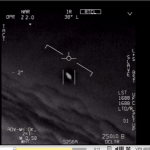
This article was originally published at The Conversation. The publication contributed the article to Space.com’s Expert Voices: Op-Ed & Insights .
Chris Impey , University Distinguished Professor of Astronomy, University of Arizona
On June 25, 2021, the Office of the Director of National Intelligence released a much-anticipated report on UFOs to Congress. The military has rebranded unidentified flying objects as unidentified aerial phenomena – UAPs – in part to avoid the stigma that has been attached to claims of aliens visiting the Earth since the Roswell incident in 1947. The report presents no convincing evidence that alien spacecraft have been spotted, but some of the data defy easy interpretation.
I’m a professor of astronomy who has written extensively on the search for life in the universe. I also teach a free online class on astrobiology. I do not believe that the new government report or any other sightings of UFOs in the past are proof of aliens visiting Earth. But the report is important because it opens the door for a serious look at UFOs. Specifically, it encourages the U.S. government to collect better data on UFOs, and I think the release of the report increases the chances that scientists will try to interpret that data. Historically, UFOs have felt off limits to mainstream science, but perhaps no more.
Related: UFO sightings remain mysterious, US government report says
What’s in the UFO report?The No. 1 thing the report focuses on is the lack of high-quality data. Here are the highlights from the slender nine-page report, covering a total of 144 UAP sightings from U.S. government sources between 2004 and 2021:
“Limited data and inconsistent reporting are key challenges to evaluating UAP.”Some observations “could be the result of sensor errors, spoofing, or observer misperception.”“UAP clearly pose a safety of flight issue and may pose a challenge to U.S. national security.”Of the 144 sightings, the task force was “able to identify one reported UAP with high confidence. In that case, we identified the object as a large, deflating balloon. The others remain unexplained.”“Some UAP many be technologies deployed by China, Russia, another nation, or non-governmental entity.”UFOs are taboo among scientists[image error]
The Office of the Director of National Intelligence prepared the report for the Congressional Intelligence and Armed Services Committees. (Image credit: Office of the Director of National Intelligence)UFO means unidentified flying object. Nothing more, nothing less. You’d think scientists would enjoy the challenge of solving this puzzle. Instead, UFOs have been taboo for academic scientists to investigate, and so unexplained reports have not received the scrutiny they deserve.
One reason is that most scientists think there is less to most reports than meets the eye, and the few who have dug deeply have mostly debunked the phenomenon. Over half of sightings can be attributed to meteors, fireballs and the planet Venus.
Another reason for the scientific hesitance is that UFOs have been co-opted by popular culture. They are part of a landscape of conspiracy theories that includes accounts of abduction by aliens and crop circles. Scientists worry about their professional reputations, and the association of UFOs with these supernatural stories causes most researchers to avoid the topic.
Related: 7 things most often mistaken for UFOs
But some scientists have looked. In 1968, Edward U. Condon at the University of Colorado published the first major academic study of UFO sightings. The Condon Report put a damper on further research when it found that “nothing has come from the study of UFOs in the past 21 years that has added to scientific knowledge.”
However, a review in 1998 by a panel led by Peter Sturrock, a professor of applied physics at Stanford University, concluded that some sightings are accompanied by physical evidence that deserves scientific study. Sturrock also surveyed professional astronomers and found that nearly half thought UFOs were worthy of scientific study, with higher interest among younger and more well-informed astronomers.
If astronomers are intrigued by UFOs – and believe some cases deserve study with academic rigor – what’s holding them back? A history of mistrust between ufologists and scientists hasn’t helped. And while UFO research has employed some of the tools of the scientific method, it has not had the core of skeptical, evidence-based reasoning that demarcates science from pseudoscience.
A search of 90,000 recent and current grants awarded by the National Science Foundation finds none addressing UFOs or related phenomena. I’ve served on review panels for 35 years, and can imagine the reaction if such a proposal came up for peer review: raised eyebrows and a quick vote not to fund.
[image error]
Radio telescopes like the Allen Telescope Array seen here scan the sky looking for signs of intelligent life in the universe. (Image credit: Seth Shostak/SETI Institute)While the scientific community has almost entirely avoided engaging with UFOs, a much more mainstream search for intelligent aliens and their technology has been going on for decades.
The search is motivated by the fact that astronomers have, to date, discovered over 4,400 planets orbiting other stars. Called exoplanets, some are close to the Earth’s mass and at just the right distance from their stars to potentially have water on their surfaces – meaning they might be habitable.
Astronomers estimate that there are 300 million habitable worlds in the Milky Way galaxy alone, and each one is a potential opportunity for life to develop and for intelligence and technology to emerge. Indeed, most astronomers think it very unlikely that humans are the only or the first advanced civilization.
This confidence has fueled an active search for extraterrestrial intelligence, known as SETI. It has been unsuccessful so far. As a result, researchers have recast the question “Are we alone?” to “Where are the aliens?” The absence of evidence for intelligent aliens is called the Fermi paradox. First articulated by the physicist Enrico Fermi, it’s a paradox because advanced civilizations should be spread throughout the galaxy, yet we see no sign of their existence.
Related: 8 times the government looked for flying saucers
The SETI activity has not been immune from scientists’ criticism. It was starved of federal funding for decades and recently has gotten most of its support from private sources. However, in 2020, NASA resumed funding for SETI, and the new NASA administrator wants researchers to pursue the topic of UFOs.
In this context, the intelligence report is welcome. The report draws few concrete conclusions about UFOs and avoids any reference to aliens or extraterrestrial spacecraft. However, it notes the importance of destigmatizing UFOs so that more pilots report what they see. It also sets a goal of moving from anecdotal observations to standardized and scientific data collection. Time will tell if this is enough to draw scientists into the effort, but the transparency to publish the report at all reverses a long history of secrecy surrounding U.S. government reports on UFOs.
I don’t see any convincing evidence of alien spacecraft, but as a curious scientist, I hope the subset of UFO sightings that are truly unexplained gets closer study. Scientists are unlikely to weigh in if their skepticism generates attacks from “true believers” or they get ostracized by their colleagues. Meanwhile, the truth is still out there.
This article has been updated to clarify that the report was produced by the Office of the Director of National Intelligence.
This article is republished from The Conversation under a Creative Commons license. Read the original article.
Follow all of the Expert Voices issues and debates — and become part of the discussion — on Facebook and Twitter. The views expressed are those of the author and do not necessarily reflect the views of the publisher.
The post US intelligence report on UFOs: No aliens, but government transparency and desire for better data might bring science to the UFO world, , appeared first on NEWDAWN Blog.
FCC listing suggests Google’s midrange Pixel 5A 5G could arrive soon, Jon Porter

The Pixel 5A 5G, Google’s midrange counterpart to last year’s Pixel 5, has been spotted in the FCC’s database, suggesting a release might not be far away. Android Police, which first saw the two listings, reports that none specifically mention the name “Pixel 5A” but that at least one of the three model numbers (GR0M2) lines up with previous reports about the barely announced phone.
Android Police speculates that one of the models (G1F8F) is the version of the phone destined for release in the US based on its wireless frequency bands, but reports that this version doesn’t offer support for mmWave 5G networks. In contrast, the Pixel 4A 5G offered mmWave support when used with compatible carriers. The other two models could be the phone’s international versions.
Otherwise the listings don’t offer many new details compared to what’s already been rumored about the phone. The Pixel 5A will reportedly be powered by a Qualcomm Snapdragon 765G processor, will be equipped with a 6.2-inch OLED 1080p display, and will include a headphone jack like Google’s previous A-series Pixels. Two rear cameras are expected — a main camera and an ultrawide — based on the recent leak of an ultrawide camera shot apparently taken by the unreleased phone.
The big question now is when we’ll see Google officially detail the phone beyond simply confirming it exists. When it pre-announced the phone earlier this year in response to rumors it had been cancelled, Google didn’t give an exact release date, and merely said it would be coming “later this year.” It would also only officially confirm a release in the US and Japan but, as Android Police notes, it would be strange to produce two international versions of the handset if Japan is the only non-US market for the device.
The post FCC listing suggests Google’s midrange Pixel 5A 5G could arrive soon, Jon Porter appeared first on NEWDAWN Blog.
WhatsApp will let you send images and videos in their ‘best quality’, Jon Porter
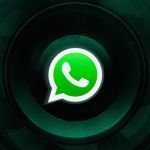
A future version of WhatsApp will give more control over the amount of compression it applies to sent images and videos. WABetaInfo reports that the two features are currently in development for the Android app, and should eventually present three quality options when sending images and video. The options are “Auto,” “Best quality,” or “Data saver.”
If it releases in this form, it could let you force media to be more compressed if you’re worried about internet speeds or data caps, or lower the amount of compression to ensure images or video are sent in their highest possible quality. Currently, avoiding WhatsApp’s compression involves changing a file’s extension to send it as a document rather than an image or video (The Next Web has a guide on how to do so here).
 The in-development option for video quality.Image:
WABetaInfo
The in-development option for video quality.Image:
WABetaInfo
 And the same option for photo quality.Image: WABetaInfo
And the same option for photo quality.Image: WABetaInfoThere’s currently no word on when the feature may see an official release, and WABetaInfo’s report relates specifically to the Android beta app and not iOS. But given the feature parity between WhatsApp’s apps, development on iOS is unlikely to be too far behind.
Image and video quality settings join a growing list of unreleased WhatsApp features unearthed by WABetaInfo. The most anticipated of these is multi-device support, which will allow the service to be usable across multiple devices. The app researcher reported the feature was in development last year, and more recently Facebook CEO Mark Zuckerberg confirmed the feature will launch soon.
The post WhatsApp will let you send images and videos in their ‘best quality’, Jon Porter appeared first on NEWDAWN Blog.
July 8, 2021
Mini LED display reportedly coming to 11-inch iPad Pro next year, Sam Byford

Apple plans to add a Mini LED screen to the 11-inch iPad Pro in 2022, following the introduction of the technology on this year’s 12.9-inch model, according to a research note by analyst Ming-chi Kuo. The note was reported on by AppleInsider and MacRumors.
Apple released new versions of the 11-inch and 12.9-inch iPad Pro this year, both featuring M1 processors but only the larger model including a Mini LED display. Mini LED is a new screen technology that involves using thousands of tiny LEDs to create focused local dimming zones, allowing for better contrast and HDR performance. The 12.9-inch iPad Pro has 2,500 local dimming zones.
Kuo also says that Apple is planning to bring Mini LED screens to the MacBook line. 14-inch and 16-inch Mini LED models are reportedly going into production this quarter, while Kuo believes a redesigned MacBook Air with the display technology will be released in 2022. That’s a claim he’s made before, also saying that cheaper iPad models would switch to OLED panels.
Mini LED technology was reported to have been the cause of supply constraints for the new iPad Pro before it launched earlier this year. The device still isn’t readily in stock, with Apple estimating shipping times of between two to three weeks for most models on its US website.
The post Mini LED display reportedly coming to 11-inch iPad Pro next year, Sam Byford appeared first on NEWDAWN Blog.



